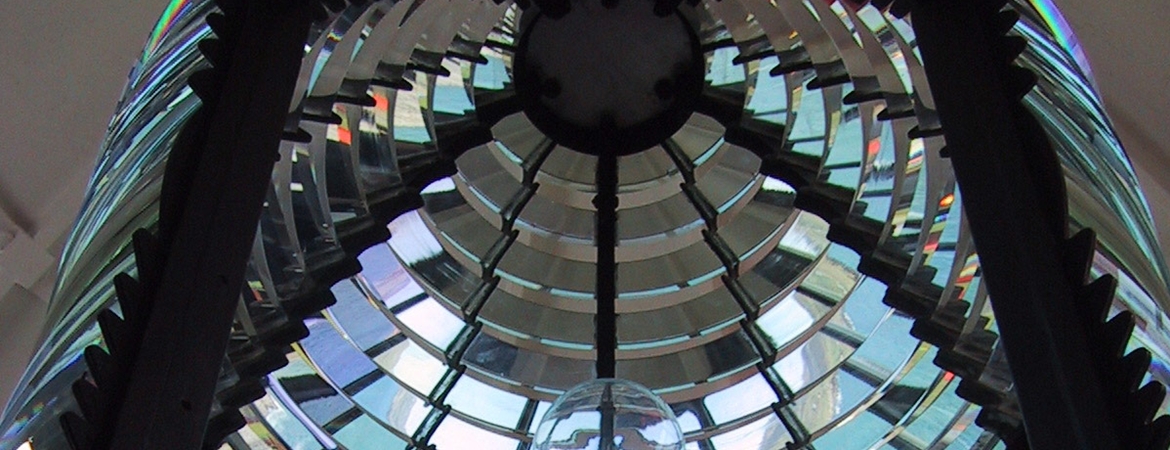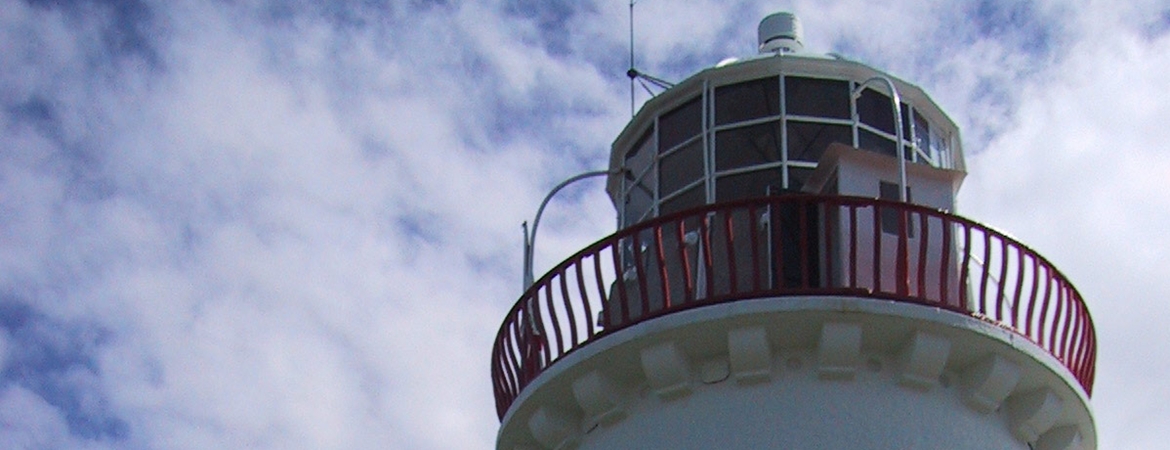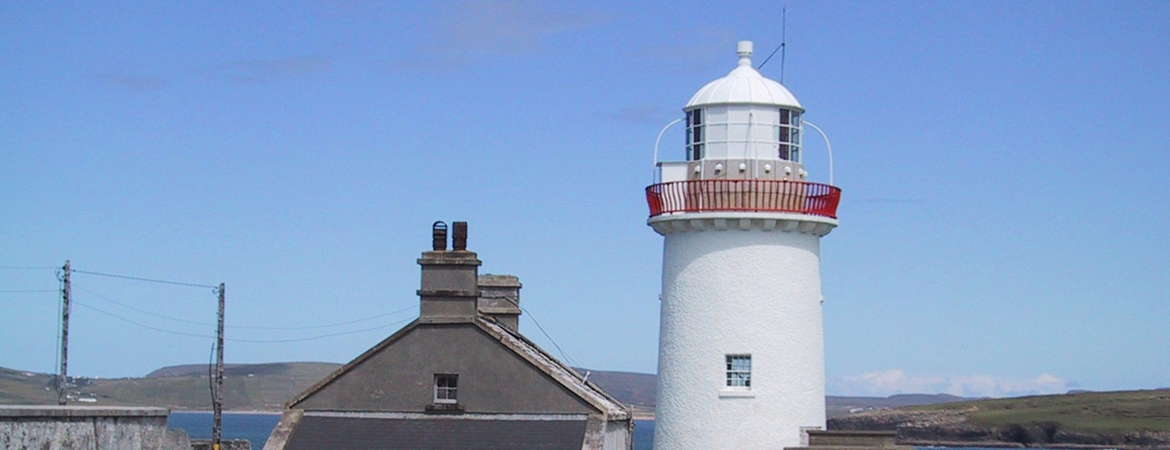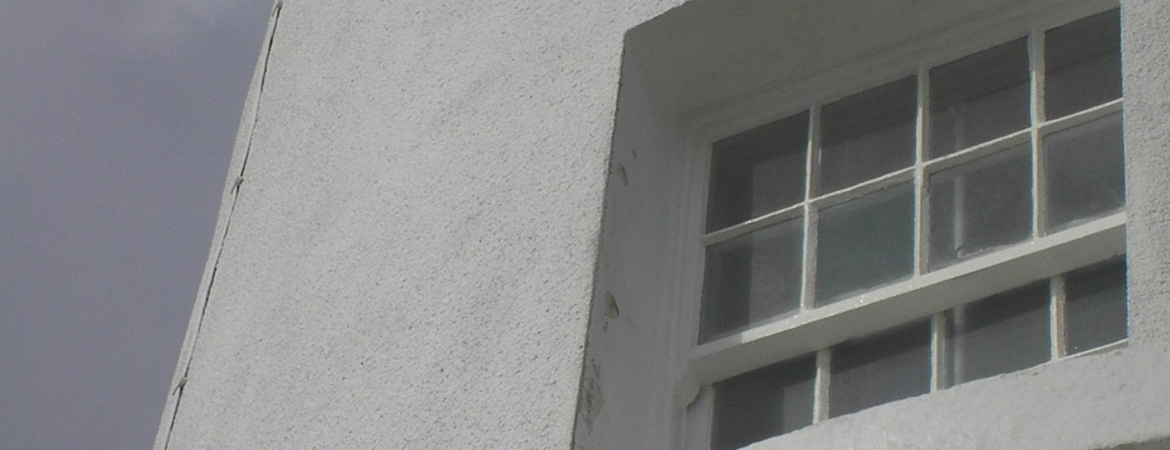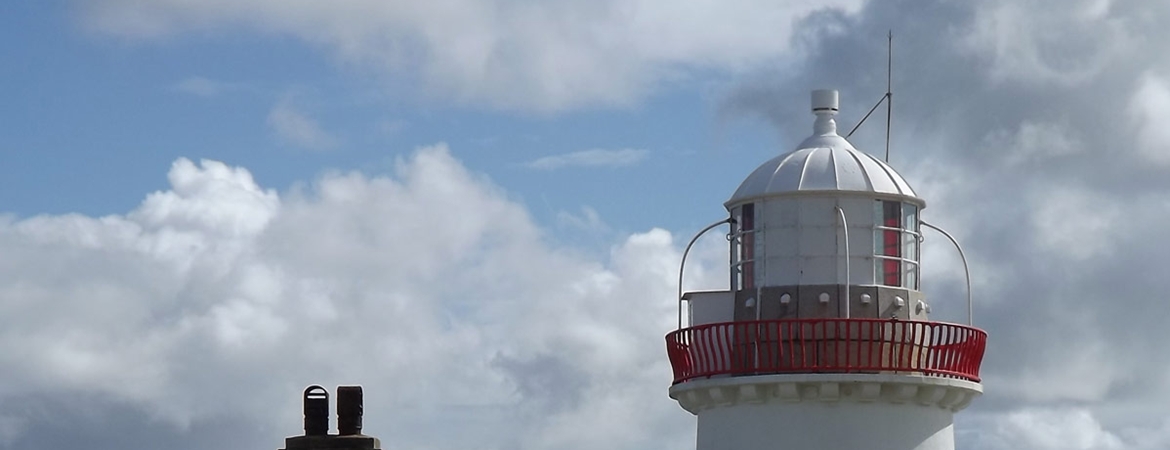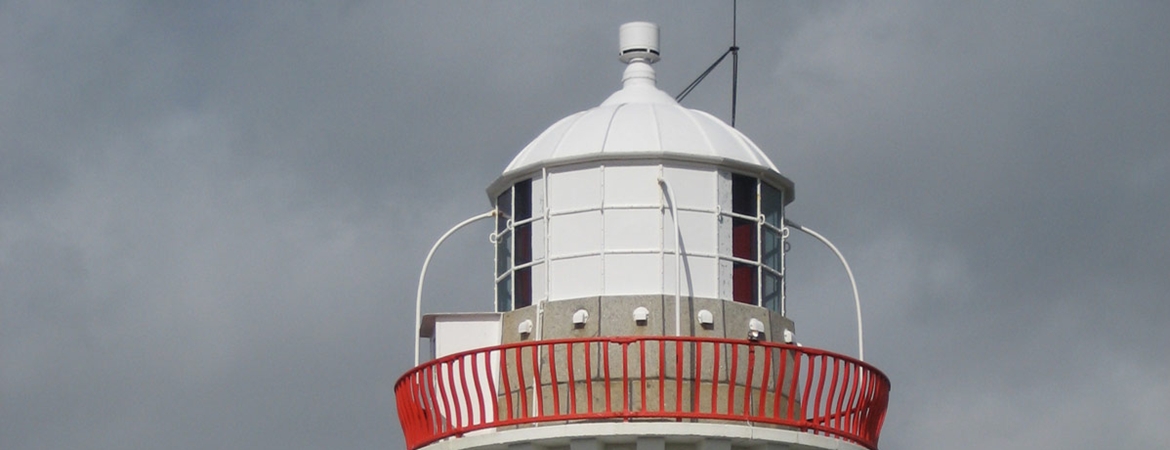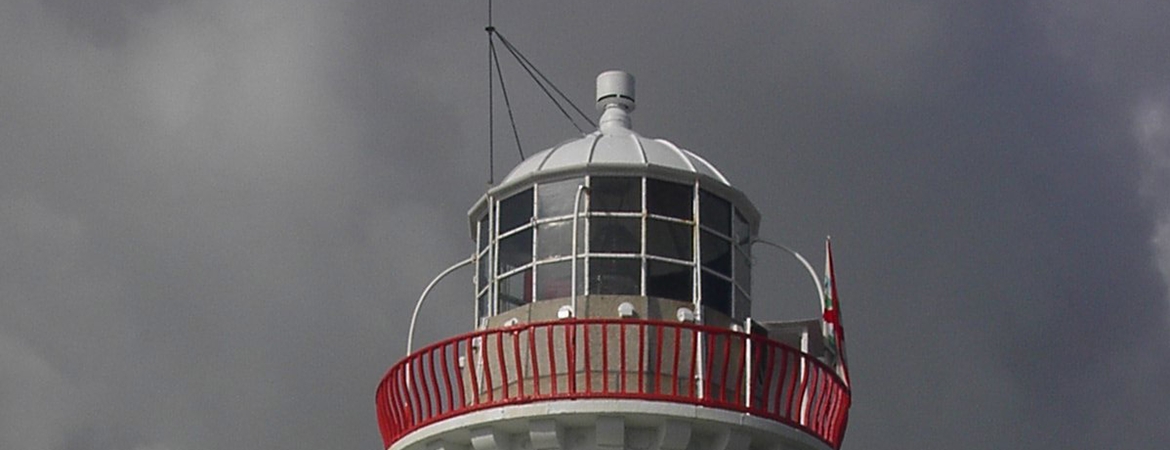This is a harbour light and unlike its neighbour on Eagle Island it enjoys comparative peace tucked up on Gubbacashel Point. It guides vessels from seaward clear of a sunken rock on the western side of Broadhaven into a safe anchorage.
A light or beacon was first looked for by the Coast Guard in 1843 and George Halpin, the Board's Inspector, reported that if a lighthouse was not approved a beacon tower could be built with floors and steps so that at a later date it could easily be altered into a lighthouse. The Board favoured a beacon but the project was postponed towards the end of 1845 due to difficulties in obtaining the ground. Twelve months lapsed before the Board's Law Agent reported that the ground was available, when the Inspector was ordered to go ahead with the erection of a Beacon Tower.
Strong local representation was made to the Board for a lighthouse and buoys to mark the channel to Belmullet. This was supported by George Halpin, and generally approved by the Board, but the Lighthouse was put on the long finger. By June 1848 the Inspector reported that the tower was complete and suggested it should be fitted up as a Harbour Light. The Board again concurred and ordered that Trinity House be informed. Their approval was received two months later and towards the end of the year the Inspector reported that the lantern had been delivered and was ready for erection. Meanwhile a dwelling and store for the Keeper had been designed by George Halpin and construction was carried out by the Board's workmen under the Inspector's supervision. The 50 foot tower was left in its natural grey stone colour.
The light was first established on 1st June 1855; a fixed third order dioptric, supplied by W. Wilkins of London, 87 feet above high water and visible for twelve miles. It showed white to seaward and the east side of the haven, and red to the west side. The cost up to the end of 1855 was £6,976-0-10d.
Seventy years later, in 1924, the Inspecting Committee approved the improvement of the light, at a cost of £500, with a seven jet acetylene burner, altering the fixed light to occulting 2 seconds light, 2 seconds dark, and using the existing lens. The Board postponed the improvement every year until 1930 when Board of Trade sanction was granted. Broadhaven was converted to unwatched acetylene on 1st December 1931, with the occulting character being exhibited and the red sectors remaining, increasing the candle power to 3,000. The colour of the tower changed to white. This was all at a cost of £434-10-7d.
In 1946 the candle power was increased to 4,000 and after the Tour of Inspection in 1951, the red sector was increased by 3º to a bearing of 355º. On the 21st September 1977 Broadhaven was converted to electric operation.
The station is in the care of an Attendant who visits the station regularly to carry out routine duties.
A light or beacon was first looked for by the Coast Guard in 1843 and George Halpin, the Board's Inspector, reported that if a lighthouse was not approved a beacon tower could be built with floors and steps so that at a later date it could easily be altered into a lighthouse. The Board favoured a beacon but the project was postponed towards the end of 1845 due to difficulties in obtaining the ground. Twelve months lapsed before the Board's Law Agent reported that the ground was available, when the Inspector was ordered to go ahead with the erection of a Beacon Tower.
Strong local representation was made to the Board for a lighthouse and buoys to mark the channel to Belmullet. This was supported by George Halpin, and generally approved by the Board, but the Lighthouse was put on the long finger. By June 1848 the Inspector reported that the tower was complete and suggested it should be fitted up as a Harbour Light. The Board again concurred and ordered that Trinity House be informed. Their approval was received two months later and towards the end of the year the Inspector reported that the lantern had been delivered and was ready for erection. Meanwhile a dwelling and store for the Keeper had been designed by George Halpin and construction was carried out by the Board's workmen under the Inspector's supervision. The 50 foot tower was left in its natural grey stone colour.
The light was first established on 1st June 1855; a fixed third order dioptric, supplied by W. Wilkins of London, 87 feet above high water and visible for twelve miles. It showed white to seaward and the east side of the haven, and red to the west side. The cost up to the end of 1855 was £6,976-0-10d.
Seventy years later, in 1924, the Inspecting Committee approved the improvement of the light, at a cost of £500, with a seven jet acetylene burner, altering the fixed light to occulting 2 seconds light, 2 seconds dark, and using the existing lens. The Board postponed the improvement every year until 1930 when Board of Trade sanction was granted. Broadhaven was converted to unwatched acetylene on 1st December 1931, with the occulting character being exhibited and the red sectors remaining, increasing the candle power to 3,000. The colour of the tower changed to white. This was all at a cost of £434-10-7d.
In 1946 the candle power was increased to 4,000 and after the Tour of Inspection in 1951, the red sector was increased by 3º to a bearing of 355º. On the 21st September 1977 Broadhaven was converted to electric operation.
The station is in the care of an Attendant who visits the station regularly to carry out routine duties.

